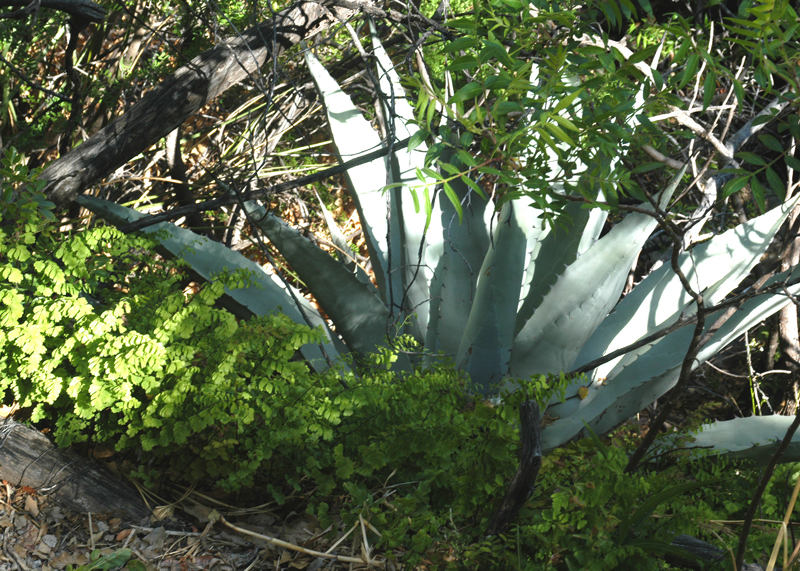Microclimates in landscaping
I had agreed to a speaking engagement at Sul Ross University in Alpine out in the Big Bend Country – Brewster County – biggest county in Texas – 1/7 the size of Ohio –population 9,500 in most recent census.
I jumped at that chance because it was going to be on my birthday, and I knew I’d be speaking in the lecture hall my dad had used as a professor 70 years earlier. (He was 42 when I was adopted.) Several people who had known Mom and Dad actually attended my talk, but that’s a discussion for another time.
It rained in Brewster County the next day as we drove down to Big Bend National Park. My dad had made that 118-mile trip every two weeks during the ‘30s and ‘40s cataloging the plants of the Chisos Mountains.
Years later, my friend Benny Simpson had told me about one special trail to Cattail Falls that would take us to a pool in the desert at the base of the mountains. (I have a better description, but I believe it’s a protected location.) Benny said we’d find willows and cottonwoods, cattails, columbines, ferns, and a whole host of other wetland plants that had somehow found their ways to that tiny oasis.
Lynn and I had made the hike one time before, but that was in late fall and it was a lot cooler. We were also much younger. This time it seemed like the hike up and up must have been several times longer. Temperatures were flirting with 100F, and we were tiring fast.
As we crossed the last hill and rounded the last turn I saw this miraculous little scene.
A dryland agave on the west was giving shelter to a delicate maidenhair fern facing east. Both were thriving. Had the agave been 18 inches farther to the east the shade of overhead trees would have been too much for its survival. Had the ferns not had the protection of the agave’s bold foliage to the west, their fronds would have sizzled in that Texas frypan even in early May.
I love this special photo because…
That, my friend. Is a micro-climate.
My dad, Dr. Omer E. Sperry, was a PhD botanist who had left the University of Nebraska to become a founding force in the biology department at Sul Ross State Teacher’s College 100 years ago.
He was co-founder of the Range and Forestry Department at the Agricultural and Mechanical College of Texas in 1946.
He’s the one who taught me about micro-climates and how a plant is only truly native where you find it growing successfully in nature.
He’s the one who warned me that if you dig a plant and move it from one place to another – no matter how insignificant the move may seem – that plant may not be adapted.
“Neil, you always want to use plants that are adapted to their surroundings or else you’ll need to adapt their surroundings to fit them.” (Omer Sperry, when I was barely old enough to remember. I lost my dad 50 years ago next month. That message, like my millions of fond memories of him, has stuck with me all that time.)

